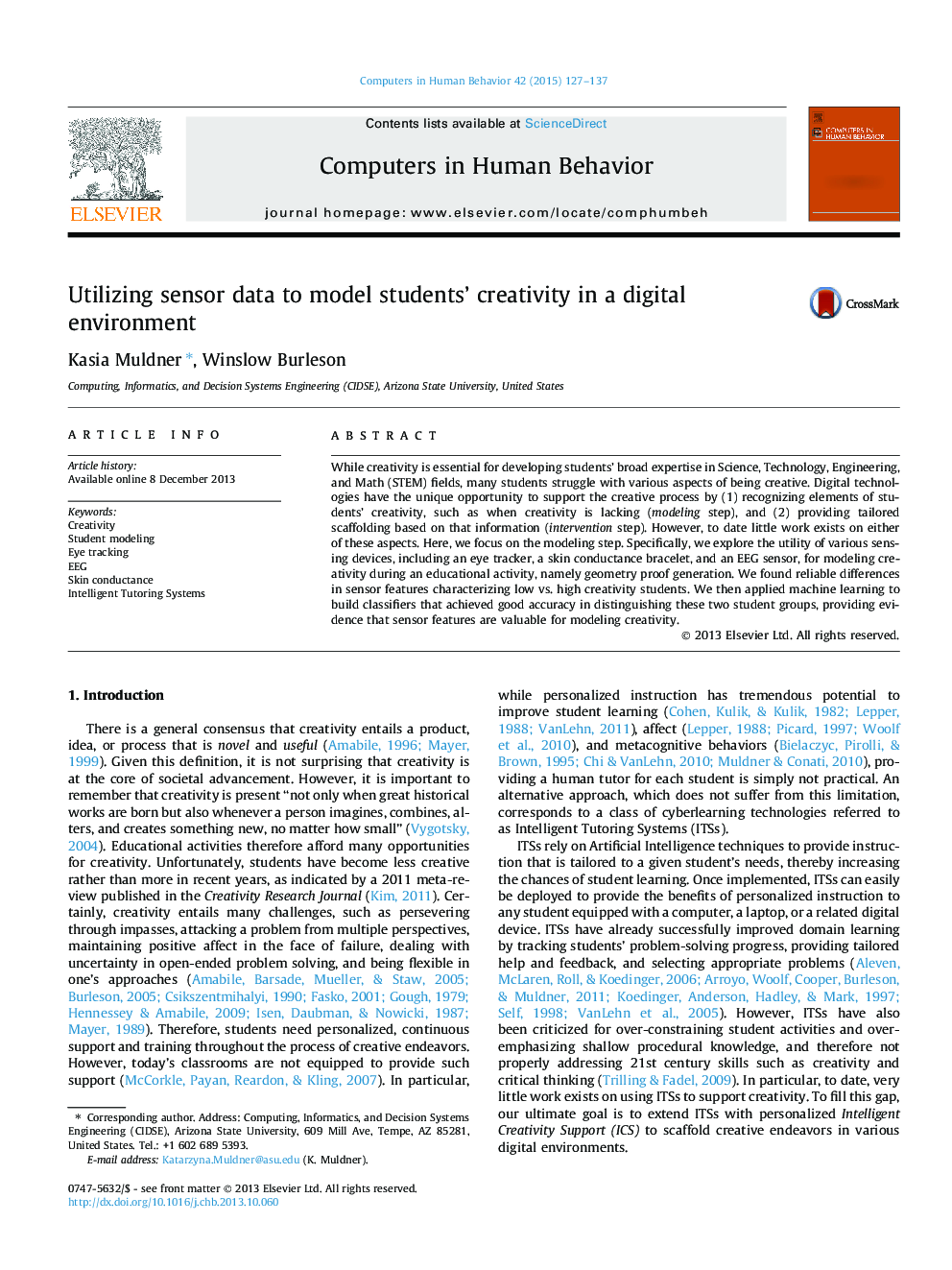| Article ID | Journal | Published Year | Pages | File Type |
|---|---|---|---|---|
| 350286 | Computers in Human Behavior | 2015 | 11 Pages |
•We collected data from a creative problem solving task in a digital environment.•We found that sensor features distinguish between low and high creativity students.•We devised computational models to automatically classify students’ creativity.
While creativity is essential for developing students’ broad expertise in Science, Technology, Engineering, and Math (STEM) fields, many students struggle with various aspects of being creative. Digital technologies have the unique opportunity to support the creative process by (1) recognizing elements of students’ creativity, such as when creativity is lacking (modeling step), and (2) providing tailored scaffolding based on that information (intervention step). However, to date little work exists on either of these aspects. Here, we focus on the modeling step. Specifically, we explore the utility of various sensing devices, including an eye tracker, a skin conductance bracelet, and an EEG sensor, for modeling creativity during an educational activity, namely geometry proof generation. We found reliable differences in sensor features characterizing low vs. high creativity students. We then applied machine learning to build classifiers that achieved good accuracy in distinguishing these two student groups, providing evidence that sensor features are valuable for modeling creativity.
